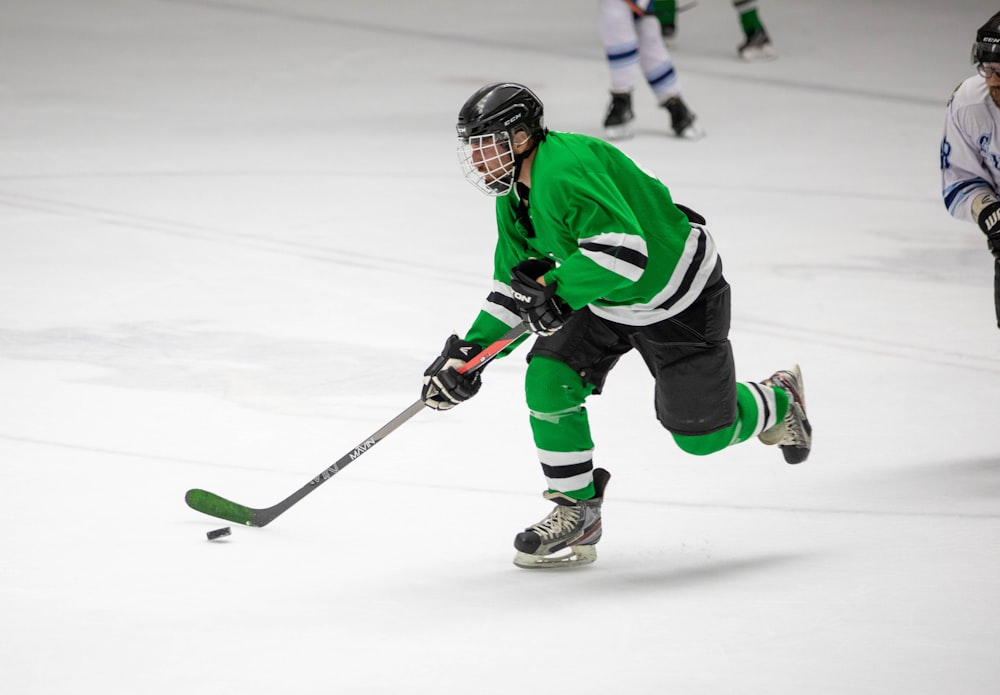Ice hockey is a relatively straightforward sport. The reason that many people believe otherwise is largely due to the sport’s low popularity and the fact that for the uninitiated, knowledge of hockey boils down to stating it’s a hard game with no or extremely specific regulations. What is the situation truly like? – Fundamental Rules.
There are 22 players on each squad, including two goalkeepers.
At any given time, there can be up to six participants on the screen. This is significant since the number cannot be raised while the adjustments are being implemented.
A hockey game is split into three 20-minute quarters, with the entire game lasting more than an hour. When the game is paused, the clock stops. This is known as a clean game.
A blue line divides the hockey rink into periods: one for each team and one neutral in the middle.
If the official loses sight of the puck for more than 3 seconds or it hits the stands, the game is resumed.
After each scored goal, the game is restarted; the losing side does not instantly gain possession of the puck- Fundamental Rules.
Is It True That Hockey Is Exclusively Played With A Stick?
Contrary to appearances, the query is well-founded, as it turns out that, though the stick is required equipment for players, it is often able to play fairly well without it.
The players are free to play in any way they like, deflecting the puck with any part of their body or clothing. It is only required to hit the stick when attempting to score a goal. Both fouls will result in the game being restarted: the stick must not be played over the shoulder and the hand must not be used on a teammate.
In Ice Hockey, Penalties Are Called “Penalties.”
The primary concept for penalties for in-game violations is to keep the game running smoothly while granting privileges to the injured. When the referee observes a violation, he will raise his hand to signify a fault, but play will continue and will only be stopped when one of the fouling team members touches the puck in any way. This allows you to finish each action in practice, even if a teammate is fouled while constructing it.
The player who has committed the offense faces the penalty of having to go to the penalty box. The length of time he will spend there is determined by the gravity of the offense.
- Penalties of less than two minutes are fairly prevalent.
- Larger ones – five minutes each – are used less frequently, for example, if the foul was very heinous.
- Individual penalties may also be imposed by the referee, such as 10 minutes, a match penalty, and so on.
Additional Ice Hockey Regulations -Fundamental Rules
Hockey is a fast-paced game, and specific situations are rarely seen since they are fleeting, and the players are concentrated on finishing the action and are not always aware of the offenses.
Burnt In Hockey
Offside in hockey refers to a player from his own team “waiting” for the puck in the opponent’s third. Play returns to the neutral phase after an offside signal. Due to the frequent unraveling of the game as a result of this regulation, the so-called Postponed Offside – A player who would ordinarily be blown offside may return to the middle third, and no-fault will be issued – is now in use.
Release
A discharge is an infraction in which a puck is hurled behind the opponent’s goal line from the opponent’s own half (third or half of the neutral period) in such a way that neither player has a chance to catch it. Important note: If the team playing in weak fouls, the release does not apply. The game returns to the third of the fouling team when the mistake is notified.
Summary
Ice hockey seems to have a simple set of rules. It’s essentially a simple and highly dynamic game that’s both contact & absolutely non-relaxing. Many sanctions are enforced on a case-by-case basis, which is why predicting the outcome of meetings is so difficult. At the same time, hockey is a high-adrenaline sport that allows players to release unpleasant feelings.

















